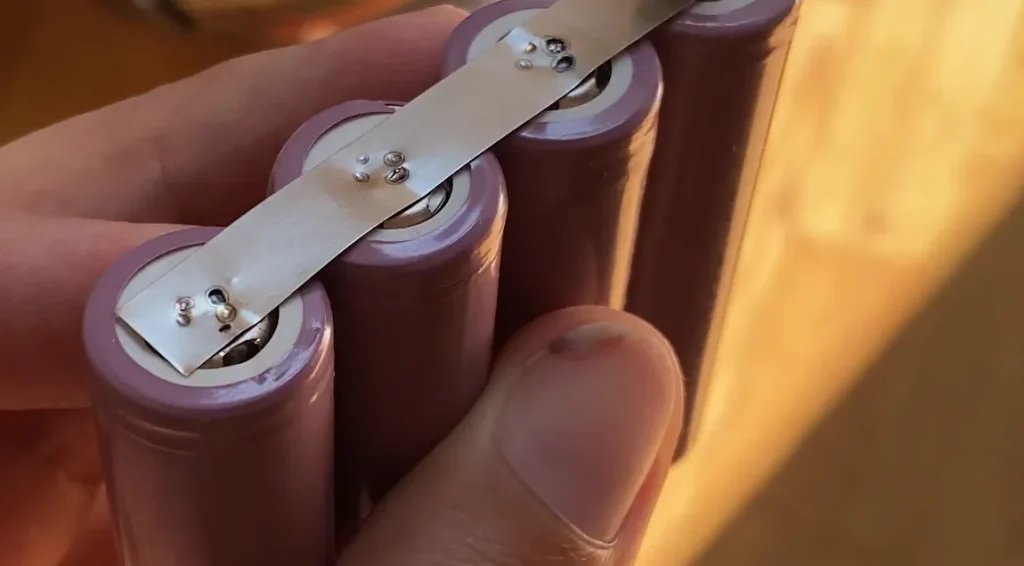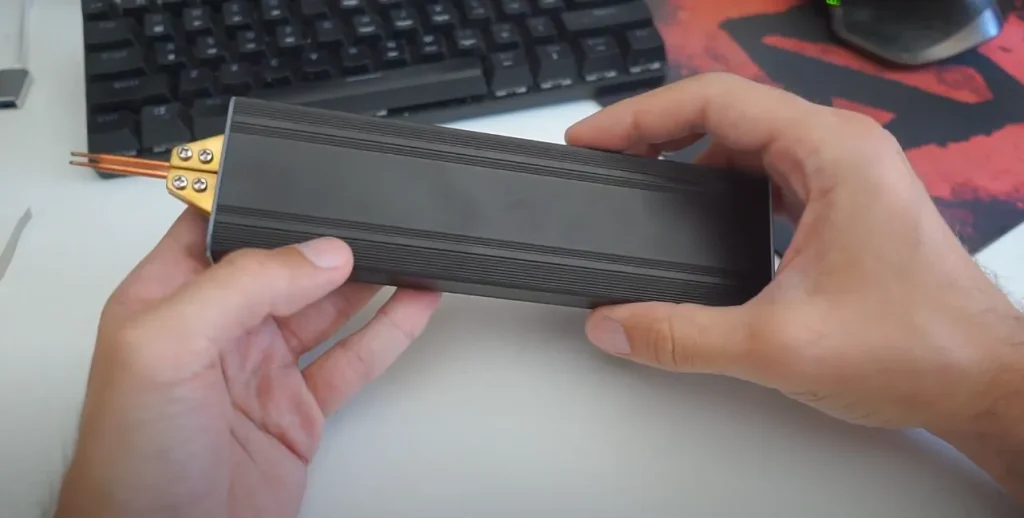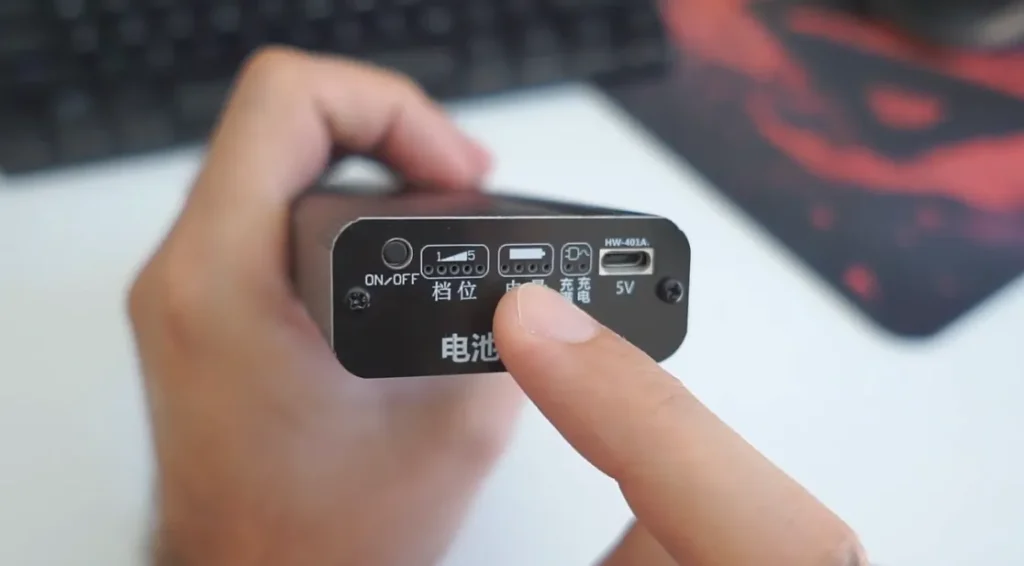Battery tab welding is a critical process in the manufacturing and repair of battery packs used in various applications, ranging from consumer electronics to automotive and renewable energy solutions. The precision and reliability of battery tab welding significantly impact the performance and safety of these battery packs. This article delves into the essentials of battery tab welding, exploring its types, applications, benefits, and maintenance. Key terms to be discussed include battery tab welder, battery tab spot welder, battery welder kit, and battery tab welding machine.
Battery tab welding is indispensable in many industries due to its ability to create durable and efficient electrical connections within battery packs. These connections are vital for the proper functioning of electronic devices, electric vehicles, and energy storage systems. With the increasing demand for high-capacity and reliable batteries, the importance of advanced welding techniques has never been greater.
What is a Battery Tab Welder?

A battery tab welder is a specialized device used to join battery tabs to the cells in a battery pack. This process is essential for creating electrical connections that ensure efficient current flow within the battery. Battery tab welders use various techniques, such as spot welding, to create robust and reliable joints. The primary uses of battery tab welders include the assembly and repair of battery packs for laptops, smartphones, electric vehicles, and renewable energy storage systems.
The welding process involves applying heat and pressure to the battery tabs and cells, causing the materials to fuse together. This creates a strong and conductive bond that can withstand the demands of daily use. Battery tab welders are designed to handle the specific requirements of battery materials, which often include nickel, aluminum, and copper.
Types of Battery Tab Welders

Battery Tab Spot Welder
A battery tab spot welder is a type of welding machine specifically designed for welding battery tabs. Spot welding involves the application of pressure and electrical current to a small area, creating a weld through localized heating. This method is widely used due to its precision and ability to create strong welds without damaging the battery cells.
Differences Between Spot Welders and Other Types Spot welders differ from other welding types in their ability to focus heat and pressure on a precise area, minimizing the risk of damage to the surrounding materials. This makes them ideal for delicate applications like battery tab welding. Unlike other welding methods, such as arc welding or MIG welding, spot welding does not require filler materials, which simplifies the process and reduces potential contamination.
Battery Welder Kit
A battery welder kit typically includes all the necessary tools and components for performing battery tab welding. This may include the welder itself, electrodes, power supplies, and additional accessories. Kits are designed to provide a comprehensive solution for both beginners and professionals.
Benefits of Using a Kit Using a kit offers several advantages, particularly for DIY enthusiasts and professionals. Kits provide all necessary components in one package, ensuring compatibility and ease of use. They also often come with detailed instructions, making it easier for users to achieve professional-quality results. Additionally, having a complete set of tools and accessories reduces the need for multiple purchases, saving time and money.
Battery Tab Welding Machine
A battery tab welding machine is a more advanced and versatile device designed for high-precision welding applications. These machines often come with features like adjustable power settings, automated welding processes, and enhanced safety measures. They are suitable for both small-scale operations and large industrial applications.
Advantages Over Manual Welding Methods Battery tab welding machines offer several benefits over manual methods, including greater precision, consistency, and speed. They also reduce the risk of human error and improve overall safety during the welding process. Automated welding processes ensure uniformity in welds, which is crucial for the reliability and performance of battery packs.
Key Features to Look for in a Battery Tab Welder

When selecting a battery tab welder, several key features should be considered to ensure optimal performance and longevity:
Power and Efficiency A welder with adjustable power settings allows for greater control over the welding process, accommodating different materials and thicknesses. High power output ensures that the welder can handle demanding tasks and produce strong welds consistently.
Durability and Build Quality A robust and well-built welder ensures longevity and reliable performance, especially in demanding industrial applications. Look for welders made from high-quality materials with solid construction to withstand regular use.
Precision and Control Look for welders that offer fine control over the welding parameters, ensuring high-quality and precise welds. Features such as digital displays, programmable settings, and feedback systems can enhance control and accuracy.
Safety Features Essential safety features include overheat protection, short-circuit prevention, and proper insulation to protect the user and equipment. Additional safety measures, such as automatic shutoff and warning indicators, can further enhance safety during operation.
How to Use a Battery Tab Welder

Step-by-Step Guide
- Set Up the Welder: Ensure the welder is properly assembled and connected to a power source. Attach the appropriate electrodes.
- Prepare the Battery Pack: Clean the battery tabs and cells to ensure a good connection.
- Position the Tabs: Place the tabs on the battery cells in the correct alignment.
- Adjust the Settings: Set the welder to the appropriate power level for the materials being welded.
- Perform the Weld: Press the electrodes onto the tabs and activate the welder. Hold for the recommended duration to complete the weld.
- Inspect the Welds: After welding, check the welds for consistency and strength.
Safety Precautions
- Wear protective gear, including gloves and safety glasses.
- Ensure proper ventilation to avoid inhaling fumes.
- Follow the manufacturer’s instructions carefully.
- Keep flammable materials away from the welding area.
Common Mistakes to Avoid
- Using excessive power, which can damage the battery cells.
- Improper alignment of tabs, leading to weak or faulty connections.
- Neglecting safety precautions, increasing the risk of injury or equipment damage.
- Not allowing sufficient cooling time between welds, which can overheat the welder and compromise weld quality.
Applications of Battery Tab Welders
Battery tab welders are used in a variety of industries, each with specific applications:
In Electronics Battery tab welders are essential in assembling battery packs for laptops, smartphones, tablets, and other portable devices. They ensure compact and reliable connections within the limited space of electronic devices. The precision required in these applications makes spot welding the preferred method due to its ability to create strong bonds without excessive heat.
In Automotive Electric vehicle (EV) manufacturing relies heavily on battery tab welders to assemble high-capacity battery packs. Precision welding ensures the safety and efficiency of EV batteries, which are critical for performance and range. The robustness of these welds directly impacts the longevity and reliability of the vehicle’s power source.
In Renewable Energy Battery tab welders play a crucial role in the assembly of storage systems for solar and wind energy. Reliable battery packs are necessary for storing and distributing renewable energy efficiently. The ability to produce consistent and durable welds ensures that energy storage systems can withstand the rigors of daily charge and discharge cycles.
Benefits of Using a Battery Tab Welder
Increased Efficiency and Precision Battery tab welders provide precise control over the welding process, resulting in high-quality welds and efficient production. This precision is particularly important in applications where space is limited and performance is critical.
Improved Safety Compared to Traditional Soldering Welding reduces the risk of heat damage to battery cells and eliminates the need for potentially hazardous solder materials. This makes the process safer for both the operator and the battery pack.
Enhanced Durability and Reliability of Battery Packs Welded connections are typically stronger and more reliable than soldered joints, leading to longer-lasting battery packs. This durability is essential in applications where battery performance and longevity are critical.
Choosing the Right Battery Tab Welder for Your Needs

Factors to Consider
- Budget: Determine your budget and look for welders that offer the best value within your price range. While higher-end models may offer advanced features, there are also many affordable options that provide reliable performance for less demanding tasks.
- Frequency of Use: Consider how often you will use the welder. Frequent use may justify a higher investment in a more durable and advanced model. For occasional use, a simpler, less expensive model may suffice.
- Specific Application Requirements: Identify the specific needs of your application, such as the type of batteries being welded and the required precision. Different applications may have unique requirements that influence your choice of welder.
Comparison of Popular Models and Brands
- Sunkko: Known for its reliable and user-friendly battery tab welders. Sunkko offers a range of models suitable for both hobbyists and professionals, with features such as adjustable power settings and digital displays.
- Sunstone: Offers high-precision welders suitable for professional use. Sunstone’s products are known for their durability and advanced features, making them a popular choice in industrial settings.
- Malectrics: Provides DIY-friendly kits for hobbyists and small-scale projects. Malectrics kits are designed to be easy to use and assemble, making them ideal for those new to battery tab welding.
Tips for Making an Informed Decision
- Read Reviews: Check online reviews and testimonials to gauge user satisfaction. Reviews can provide valuable insights into the performance and reliability of different models.
- Consult Experts: Seek advice from professionals or experienced users in your industry. Their recommendations can help you avoid common pitfalls and select the best welder for your needs.
- Test Before Buying: If possible, test different models to find the one that best meets your needs. Many suppliers offer demonstration units or trial periods, allowing you to evaluate the welder’s performance firsthand.
Maintenance and Care for Battery Tab Welders
Routine Maintenance Tasks
- Clean the Electrodes: Regularly clean the electrodes to ensure good contact and prevent contamination. Dirty electrodes can lead to poor weld quality and inconsistent results.
- Check Connections: Ensure all electrical connections are secure and free from corrosion. Loose or corroded connections can cause power fluctuations and reduce welding performance.
- Inspect Cables and Components: Look for signs of wear or damage and replace as necessary. Damaged cables can pose a safety risk and affect the welder’s functionality.
Troubleshooting Common Issues
- Inconsistent Welds: Check the power settings and electrode alignment. Inconsistent welds may also be caused by dirty electrodes or improper tab positioning.
- Overheating: Ensure adequate ventilation and reduce the duty cycle if necessary. Overheating can damage the welder and compromise weld quality.
- Poor Contact: Clean the welding surfaces and check for proper alignment. Poor contact can lead to weak welds and increased resistance.
Extending the Lifespan of Your Welder
- Regular Maintenance: Follow the manufacturer’s maintenance schedule. Regular upkeep can prevent many common issues and ensure consistent performance.
- Proper Storage: Store the welder in a clean, dry environment. Exposure to moisture or dust can damage the welder and its components.
- Careful Handling: Handle the welder and its components with care to avoid damage. Avoid dropping or striking the welder, as this can cause internal damage and affect its operation.
Conclusion
Battery tab welding is a crucial process in the assembly and maintenance of battery packs for various applications. Using a battery tab welder offers numerous benefits, including increased efficiency, precision, and safety. When choosing a welder, consider factors such as budget, frequency of use, and specific application requirements. Proper maintenance and care are essential to ensure the longevity and reliable performance of your welder.
Battery tab welders have become indispensable tools in industries that rely on high-performance batteries. By understanding the different types of welders, their key features, and proper usage techniques, users can make informed decisions and achieve superior results in their battery welding projects.
Frequently asked questions
What materials can be welded with a battery tab welder?
Battery tab welders can weld materials such as nickel, aluminum, and copper, commonly used in battery tabs and connections. These materials are chosen for their conductivity and durability, making them ideal for battery applications.
How long does it take to weld a battery tab?
The welding process typically takes a few milliseconds to a few seconds, depending on the materials and the welder’s power settings. The exact duration can vary based on the thickness of the materials and the specific requirements of the application.
Can a battery tab welder be used for other types of welding?
While primarily designed for battery tab welding, some welders may be versatile enough to handle other small-scale precision welding tasks. However, it is important to check the welder’s specifications and capabilities for other applications. Using a welder outside its intended purpose may lead to suboptimal results and potential damage to the equipment.
Leave a Reply